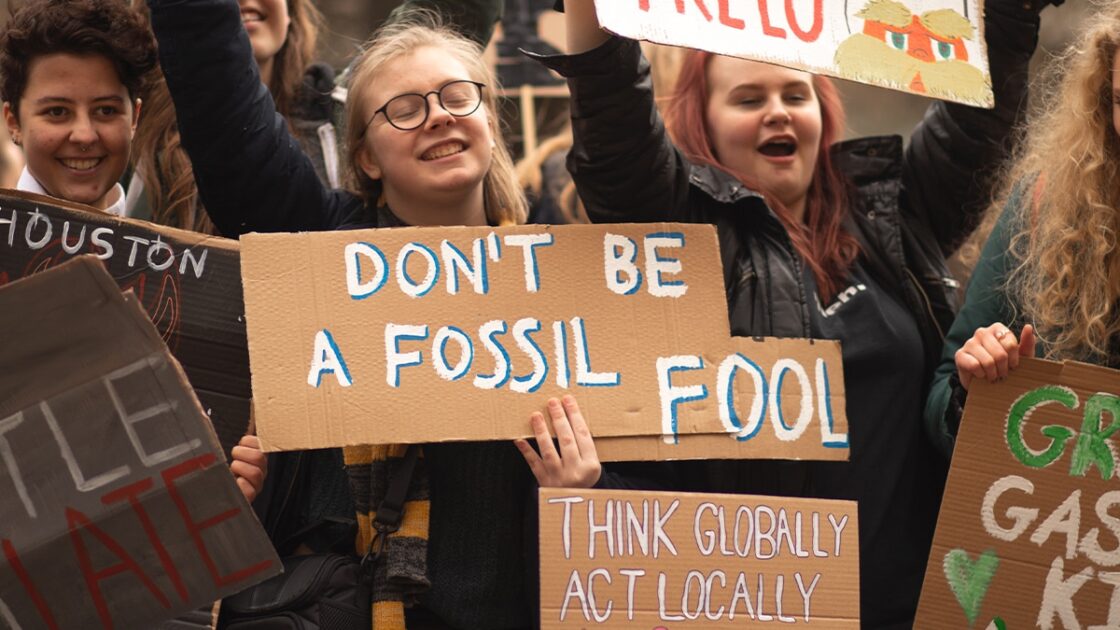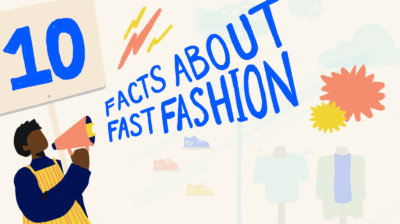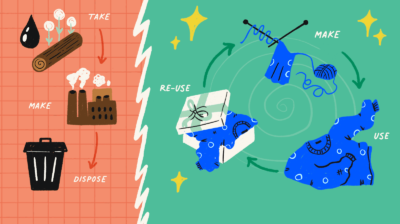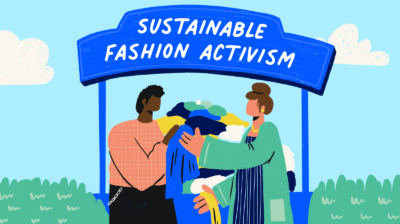My tactics for identifying greenwashing
While greenwashing has been around for decades, it is becoming increasingly harder to identify.

Greenwashing is a marketing technique used by companies to give the impression that their products, practices and policies are more environmentally-friendly than they actually are. Companies can use greenwashing in their marketing to persuade consumers, like you and I, into believing they are eco-friendly and fighting for this planet when often they are part of the problem. They hope we might buy from them, thinking we are making a conscious choice, but really our money is supporting these destructive businesses.
Greenwashing isn’t new
The term greenwashing was coined by environmentalist Jay Westerveld in 1986 when most consumers received their news from television, radio and print media. The oil company Chevron created a series of expensive television and print ads titled ‘People Do’ in the mid-1980s showing their employees protecting bears, butterflies, sea turtles and other adorable animals.
Chevron’s ads are a perfect example of greenwashing as oil is a fossil fuel causing the very climate change that is endangering these animals but this ad made consumers think that Chevron was actually a wildlife caring company.
Limited public access to information meant that greenwashing was outrageous and could contain blatant lies. Now, however, it is well planned, elaborate and more difficult to recognise. Nonetheless, here’s why it matters that we expose greenwashing.
Why identifying greenwashing matters
The climate movement is ever-growing with more and more people realising the severity of the climate crisis. In this year alone, we’ve seen countries suffer from wildfires while other parts of the world experienced floods. Communities are facing devastation already, especially in the Global South who have contributed to climate change the least and are not as privileged to adapt due to historical and continued exploitation from wealthier, Global North countries usually due to colonisation.
The IPCC (Intergovernmental Panel on Climate Change), which is the leading authority on climate science, released a report that has confirmed that the choices we make this decade will decide our future. It’s no wonder that we are understanding the urgency of the climate crisis and are demanding action through protests, strikes, court cases and more.
Along with this, many of those with the resources to decide, are questioning where they are putting their money and are trying to opt for brands and products that have the least impact on the environment along with being socially just, for example, paying fair wages to its workers.
Greenwashing hidden in plain sight
A combination of pressure on corporations from activists to be green, and potentially losing profits from consumers who are now making eco-conscious choices, means that companies must take climate action. Except, some are hiding their real and horrific impact whilst showing you the odd positive step they take, focusing their adverts on their promises to change rather than actually changing and keeping the true harm of their business hidden.
Take H&M for example. H&M are a fast fashion clothing brand that has accumulated $4.3 billion worth of unsold clothes much of which they were accused of destroying. They produce 3 billion (largely plastic-based filled) items per year and have failed to fulfil a pledge to ensure their garment workers are paid a fair living wage.
They are contributing to the same industry, fast fashion, that uses excessive amounts of natural resources for clothes made by exploited workers, especially women in the Global South. These workers are most impacted by the climate crisis their employers are part of causing.
The garments are then flown or shipped over long distances to sell in countries, like Ireland, where they are labelled with prices that leave a huge margin for the company itself and often less than the living wage for each worker.
The impact of Greenwashing
In Guangdong in China, it’s reported that young women face 150 hours of overtime each month, 60% have no contract and 90% have no access to social insurance. These fast fashion companies produce so many clothes that consumers buy more than we need and we’ll dispose of it soon after.
Also, the clothes are created in line with fashion trends which are changing faster and faster due to the internet and leading us to constantly bin out of style clothing. On top of that, the clothes are purposefully poor quality so that once again, we have to stop wearing them shortly after we purchase them.
These companies don’t make clothes to last so that you go back and buy from them again. Which works wonders for their profits but is contributing hugely to the waste and plastic crisis that creates landfills in predominantly poorer countries and 8 million tons of plastic waste escapes into the oceans every year, killing precious marine life.
Greenwashing tactics
So H&M are a fast fashion, human rights-violating and polluting corporation, but their adverts don’t tell you any of this. What their campaigns do recently entail, however, is empowering stories about young climate activists fighting for their future. In these ironic ads, H&M is giving a platform to these young people so that you focus on this supposedly good deed and assume they are eco-friendly themselves when really this is performative as you can tell from the underlying facts.
They also use a pink and red colour combination for potentially 3 main purposes, it has been used multiple times in Extinction Rebellion protests so psychologically you might link this palette to climate action. Also, they are colours associated with love and hope that encourage you to engage with their brand rather than, for example, yellow and black which is also used in activism but could evoke the idea of powerful and abrasive protest.
Thirdly, it has been a popular combination in fashion particularly in the last few years and as they are a clothes brand, links positively to their product. Above all, the idea was that when you search ‘H&M’ and ‘activist’ into your browser, instead of articles, videos or images on the many protests against H&M, you will be presented firstly with how H&M and climate activists are working together.
This is greenwashing because instead of taking tangible action towards justice for humanity and having the least impact on our planet as possible, they are covering up the murky truth.
Greenwashing is a huge issue because if we believe these glossy public images about these corporate good deeds, we are more likely to keep funnelling money into them so they can prosper. Rather than mitigating climate change, its impacts would be further exacerbated while human rights are being violated worldwide because consumers have been led to think that these powers are already taking action to stop it.
Question the ads you see
We need to question marketing that centres around the environment. Ask yourself…
- Who is telling me this? Is this an activism group, small business or company that is actually working for climate justice or is it a brand that you know are harmful and can you find reliable information that contradicts their greenwashing?
- What are they telling me? Is the information factual and are they excluding the whole truth behind their business?
This one is very important…
- Why are they telling me this? Is this information being given to you so that you can be more engaged in climate issues to learn about this crisis and to lay out the facts of the climate impact of a group so that you can make a deliberate choice about where to spend your money, who to vote for etc or is it a big corporation who wants your money to make more profit?
Recognising greenwashing is just the beginning
You should find it easier to recognise greenwashing now that you know what it is and how to question these public images. You should also call it out by contacting the business, government or group, by having conversations to raise awareness amongst your friends and family or collectively through your own or existing campaigns.
Examples of organising against greenwashing include Tolmeia Gregory’s action, who is a climate justice activist that sat in a H&M shop window to point out that they are using child activists to cover up the fact that they are harming people and the planet (overnight H&M changed their shop front).
The Friday for Future’s Clean Up Standard Chartered is a campaign led by people most affected by climate change to pressure this bank to divest from fossil fuels. Now, we need to keep holding governments, corporations and banks accountable for achieving climate justice.
The great news is, there is a place for your unique capacity, skills and identity in the climate movement.






